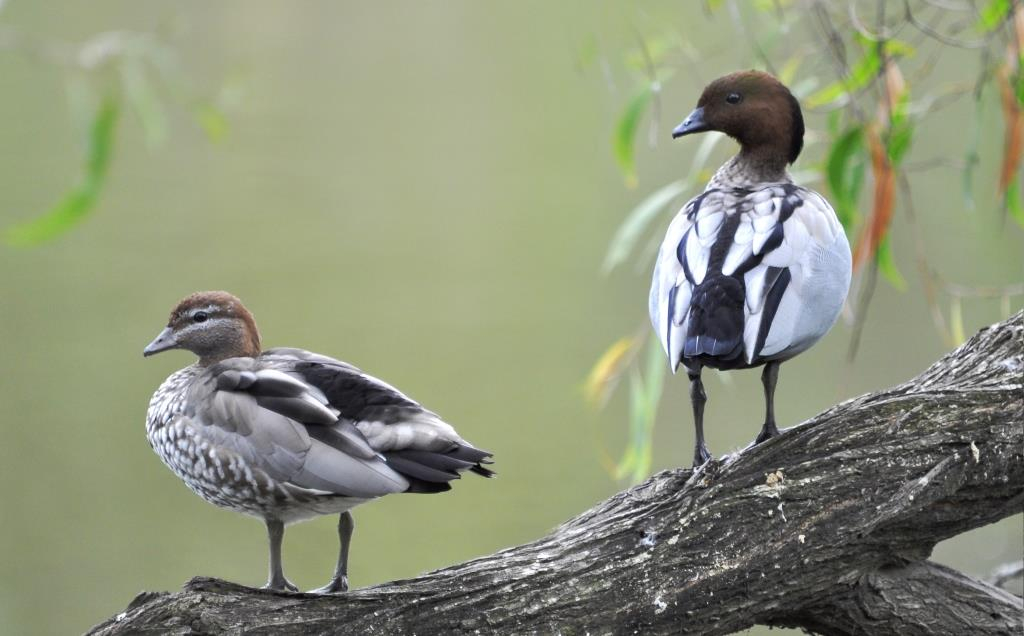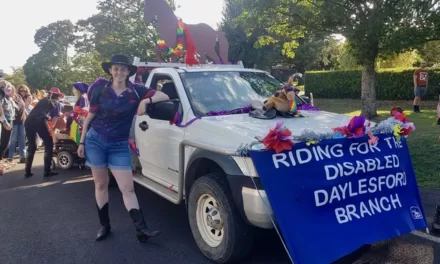Tanya Loos
To celebrate National Science week the ABC is asking Australians to vote for their favourite animal sound. The poll is down to the top ten – and I have voted for the pobblebonk or banjo frog! Vote here https://www.abc.net.au/news/science/2023-07-31/australia-favourite-animal-sounds/102577008
One of my favorite animal sounds that we can hear in the forest at this time of year didn’t even make the shortlist! The rapid-fire clucking of wood ducks as they are selecting a nest hollow is a wonderful sign that we are in our final month of winter. And not European winter – I mean the winter months that last for so long up here in our elevated forests.
The Australian Wood Duck is also known as a Maned Goose – named for the males’ little crest of black feathers along the back of the head during breeding season. These ducks are much like geese – as they are solid grazers rather than dabbling ducks. They have strong legs and feet for walking, small and serrated bills suited for grazing grasses and clovers and are pretty goose-like in their passionate protection of their ducklings! I love seeing the super dads giving my car a full open-bill threat pose even as my car flies by at 80km an hour!
These lovely ducks mate for life, and at this time of year the usual nasal ‘now’ or ‘new’ is joined by the excited clucking I mentioned before. My HANZAB (Handbook of Australian, New Zealand & Antarctic Birds) describes these calls as “continuously repeated <0.1 second duration low pitched clucks or tooks” and I was surprised to learn this call is uttered by the female.
The pair search for nest hollows mostly in the morning, with the females calling as the pair inspect each hollow carefully. Nest hollows are usually in living trees, and located within 1500 metres of water, often a dam. These hollows are used year after year – but not necessarily by the same birds.
Once the hollow is selected – the female lays a clutch of an average of 9-11 eggs. And this already big clutch may be added to by another sneaky female who will add her eggs to get the clutch up to 17-18 eggs. The clutches will be brooded only by the female while the male waits nearby and joins the female when they have their grazing periods.
If the ducks are laying now, the hatching will be in about September. This is a wonderful and weird event as the little ducklings take an extraordinary leap from the nest hollow to the ground! They are so light they bounce! They are not always led to water – instead the parents may take them to a rich patch of pasture for their first feed.
Australian Wood Ducks are ‘common’ but no less precious, and a great source of pleasure as we watch them raise their young each year.
Tanya Loos is a local naturalist, author and environmental consultant who loves to work in the environmental not-for-profit sector. She is the author of “Daylesford Nature Diary” available from her website or from Paradise Books in Vincent Street, Daylesford.
Have you got any nature questions for Tanya? Send them in!











